Nearly everyone is familiar with having the same person twice in their phone contacts list. Somehow you get a record of Joe Bloggs with just his e-mail, and likewise one with just his phone number.
Wouldn’t it be nice if there were some way to decide if two records were the same record? Or at the very least that they were close.
Entity resolution (also sometimes called record matching, record linkage, data matching and data linkage), is the process by which we take two records and decided whether they should be the same record.
The problem is by no means new. Algorithms for entity resolution have been in place since the 1960s. But the ubiquity of LLMs (Large Language Models) has made it possible to solve the problem with AI.
And the AI solution has some huge advantages. Rather than defining a large number of rules which help to normalize fields for comparison (Turning Mr. into Mister, St. Into Street, etc.) and then subsequently using some sort of distance measure (such as Levinshtein) to overcome spelling mistakes and the like, and then finally assembling many pieces of data into some aggregate using statistical models, we can take a shortcut.
We can leverage the full power of LLMs to provide us with a semantically meaningful embedding in a high-dimensional vector space in which to make our comparison.
This approach both increases the performance of matches, reduces programmer tuning for record structure and makes it easy to perform incremental updates to the database. This last bit is very hard for many matching strategies which scale poorly as new records are added.
And amazingly, as an added magic benefit AI along the way, we also get language agnosticism for free! We can actually compare records in German and English for instance, and get candidates for merger automatically.
Let’s see how this works.
Preliminaries
To follow along with this tutorial, we will need to install a bit of software:
First install a TerminusDB server according to the directions here for running terminusdb in a docker-compose setup.
For this tutorial you need to set up your docker-compose to use an insecure setup, so we can fire off the indexer manually. For production you should keep these actions inside of the docker with some middle-ware. Change your docker-compose.yml to include this ports section for vectorlink:
vectorlink:
ports:
- 8080:8080Code language: CSS (css)Then install tdb-cli so we can easily perform operations from the command line against the server.
You will also need a command line web client, such as curl.
And finally you will want jq to help with JSON checking and formatting.
Defining an embedding for Creative Works
To get an idea of how the approach works, we are going to start on three documents which we produce by hand. In a later blog we’ll see candidates over a more extensive corpus (and how to find thresholds
for merger).
In TerminusDB we start with a schema definition. We are going to be comparing symphonies so we will need a number of optional fields which are usually present in these types of works.
{ "@type" : "Class",
"@id" : "Work",
"key": { "@type" : "Optional", "@class" : "xsd:string" },
"opus" : { "@type" : "Optional", "@class" : "xsd:string" },
"period" : { "@type" : "Optional", "@class" : "xsd:string" },
"text" : { "@type" : "Optional", "@class" : "xsd:string" },
"language" : "xsd:language",
"dedication" : { "@type" : "Optional", "@class" : "xsd:string" },
"duration" : { "@type" : "Optional", "@class" : "xsd:string" },
"date" : { "@type" : "Optional", "@class" : "xsd:string" },
"composed" : { "@type" : "Optional", "@class" : "xsd:string" },
"movements" : { "@type" : "Optional", "@class" : "xsd:string" },
"composer" : { "@type" : "Optional", "@class" : "xsd:string" }
}Code language: JSON / JSON with Comments (json)We can save this as the file creative-work-schema.json. To load this schema we will need to create a database and then add this schema document.
First, we create the database:
tdb-cli db create admin/worksNext we insert the schema:
tdb-cli doc insert -g schema admin/works < creative-work-schema.jsonNow we need some documents which meet the schema definition. We define a few by hand, but one can imagine getting such data from many different sources, csv, or wikidata or the like. We are going to use only the following documents to get an idea of distances between them:
[{ "@type" : "Work",
"@id" : "Work/Ode_to_Joy",
"composer" : "Ludwig van Beethoven",
"key": "D minor",
"opus" : "125",
"period" : "Classical-Romantic (transitional)",
"text" : "Friedrich Schiller's Ode to Joy",
"language" : "de",
"composed" : "1822-1824",
"dedication" : "King Frederick William III of Prussia",
"duration" : "about 70 minutes",
"movements" : "Four",
"date" : "7 May 1824"
},
{ "@type" : "Work",
"@id" : "Work/Ode_an_die_Freude",
"composer" : "Ludwig van Beethoven",
"key" : "d-Moll",
"opus": "125",
"period": "Klassik-Romantik (Übergangszeit)",
"text": "Friedrich Schillers Ode an die Freude",
"language": "de",
"composed": "1822-1824",
"dedication": "König Friedrich Wilhelm III. von Preußen",
"duration": "etwa 70 Minuten",
"movements": "4",
"date": "7. Mai 1824"
},
{ "@type" : "Work",
"@id" : "Work/Symphony_No_7_in_A_major",
"composer" : "Ludwig van Beethoven",
"key" : "A major",
"opus" : "92",
"composed" : "1811–1812",
"language" : "de",
"dedication" : "Count Moritz von Fries",
"movements" : "Four"
}
]Code language: JSON / JSON with Comments (json)We will save this document as creative-work.json and then we can load into the datbase with the cli as follows:
tdb-cli doc insert admin/works < creative-work.jsonAs you’ll note here, we have the same record twice. However the 9th symphony is written in both English and German, and the 7th is only in English.
Creating Embeddings
To create the embeddings we are going to have to modify our schema to include two elements: A graphql query and a handlebars template.
You can easily play around with what graphql queries are possible by starting up the GraphQL interface from tdb-cli with the command:
tdb-cli graphql serve admin/works -oI did this and created the following simple query:
query($id: ID){
Work(id: $id){
composed
composer
date
dedication
duration
key
language
movements
opus
period
text
}
}Code language: PHP (php)When creating this query, you will not want to specify the $id such that you can play around to get the kind of query document you want. Remember, it can follow edges and get information from neighbours if this is likely to help your embedding!
The $id part is important and has to be added to your query, since we are going to look up each document in turn through the indexing interface. It constraints the query result to be precisely the id we are interested in.
Next we need to take this query result and turn it into a high quality embedding. We do this with a handlebars template. This template should contain semantic information about the fields of the object you intend to embed and what they mean.
{{#if composer}}The piece was composed by {{composer}}. {{/if}}
{{#if opus}}It is opus number {{opus}}. {{/if}}
{{#if composed}}The piece was composed during {{composed}}. {{/if}}
{{#if date}}The piece is dated to {{date}}. {{/if}}
{{#if dedication}}The piece was dedicated to {{dedication}}. {{/if}}
{{#if duration}}The piece is {{duration}} long. {{/if}}
{{#if key}}The piece is in the key of {{key}}. {{/if}}
{{#if movements}}The piece has {{movements}} movements. {{/if}}
{{#if period}}The piece was composed during the {{period}} period. {{/if}}
{{#if text}}The piece is associated with the text {{text}}. {{/if}}Code language: JSON / JSON with Comments (json)As we have a lot of fields which are optional, we try to make sure we don’t write any contextual information if the data point it is missing from the source.
Once we have created these, we will update our schema document to contain the information about how to create an embedding for this object.
{ "@type" : "Class",
"@id" : "Work",
"@metadata" : {
"embedding" : {
"query" : "query($id: ID){ Work(id: $id){ composed composer date dedication duration key language movements opus period text } } ",
"template" : "{{#if composer}}The piece was composed by {{composer}}. {{/if}} {{#if opus}}It is opus number {{opus}}. {{/if}} {{#if composed}}The piece was composed during {{composed}}. {{/if}} {{#if date}}The piece is dated to {{date}}. {{/if}} {{#if dedication}}The piece was dedicated to {{dedication}}. {{/if}}{{#if duration}}The piece is {{duration}} long. {{/if}} {{#if key}}The piece is in the key of {{key}}. {{/if}}{{#if movements}}The piece has {{movements}} movements. {{/if}}{{#if period}}The piece was composed during the {{period}} period. {{/if}}{{#if text}}The piece is associated with the text {{text}}. {{/if}}"
}
},
"key": { "@type" : "Optional", "@class" : "xsd:string" },
"opus" : { "@type" : "Optional", "@class" : "xsd:string" },
"period" : { "@type" : "Optional", "@class" : "xsd:string" },
"text" : { "@type" : "Optional", "@class" : "xsd:string" },
"language" : "xsd:language",
"dedication" : { "@type" : "Optional", "@class" : "xsd:string" },
"duration" : { "@type" : "Optional", "@class" : "xsd:string" },
"date" : { "@type" : "Optional", "@class" : "xsd:string" },
"composed" : { "@type" : "Optional", "@class" : "xsd:string" },
"movements" : { "@type" : "Optional", "@class" : "xsd:string" },
"composer" : { "@type" : "Optional", "@class" : "xsd:string" }
}
Code language: JSON / JSON with Comments (json)Again, save this as creative-work-schema.json and then you can replace the original schema document with:
tdb-cli doc insert -g schema admin/works < creative-work-schema.jsonWith this new schema in place, we can index our embeddings.
Indexing the Embeddings with VectorLink and OpenAI
Now that we’ve populated our database we need to index our embeddings with VectorLink and
OpenAI. We will need the most recent commit id, since when indexing we can’t just have a branch name, we need to know precisely what commit we are referring to.
export COMMIT_ID=`curl 127.0.0.1:6363/api/log/admin/works?count=1 -uadmin:root | jq -r '.[] | .identifier'`Code language: JavaScript (javascript)This will extra the last commit id from the history log. In my case it is:
$ echo $COMMIT_ID
00c8dr7oyv4nfld947a5g7vk9ci9r9uCode language: PHP (php)Once you have the commit id, we can fire off the indexer. First though, we need an OpenAI API key so we can get back vectors for our embedding documents. After you have obtained an API key from OpenAI,
we can use it in our headers when talking to VectorLink:
export VECTOR_LINK_EMBEDDING_API_KEY="..."Code language: JavaScript (javascript)Now we can ask vector link to index our data as follows:
export TASK_ID=`curl -H "VECTORLINK_EMBEDDING_API_KEY: $VECTOR_LINK_EMBEDDING_API_KEY" "localhost:8080/index?commit=$COMMIT_ID&domain=admin/works"`Code language: JavaScript (javascript)This command will give you back a task id. We can use that to check the status of indexing. Since we only have three documents, this should be nearly instantaneous and isn’t very useful (until you get thousands or millions of documents). You can check what the status is with:
curl -H "VECTORLINK_EMBEDDING_API_KEY: $VECTOR_LINK_EMBEDDING_API_KEY" "localhost:8080/check?task_id=$TASK_ID"Code language: JavaScript (javascript)It should say:
{"indexed_documents":3,"status":"Complete"}Code language: JSON / JSON with Comments (json)Cross-Language Entity Resolution
Now all of our document embeddings have been vectorised we can ask questions about them. One of the kinds of questions we can ask is what is in the neighbourhood of a given vector. Let’s look up the similarity of records to the record Work/Ode_to_Joy.
curl -H "VECTORLINK_EMBEDDING_API_KEY: $VECTOR_LINK_EMBEDDING_API_KEY" "localhost:8080/similar?commit=$COMMIT_ID&domain=admin/works&id=terminusdb:///data/Work/Ode_to_Joy"Code language: JavaScript (javascript)For this query we get back the following response:
[{"id":"terminusdb:///data/Work/Ode_to_Joy","distance":1.7881393e-7},
{"id":"terminusdb:///data/Work/Ode_an_die_Freude","distance":0.011980891},
{"id":"terminusdb:///data/Work/Symphony_No_7_in_A_major","distance":0.032711923}]Code language: JSON / JSON with Comments (json)Unsurprisingly Work/Ode_to_Joy is very close to itself (though not exactly since floating point arithmetic is silly). However we also see that Work/Ode_an_die_Freude is also extremely close! And it is nearly 3 times closer than another record of Beethoven’s works, despite both similar records being in a different language! This outcome would be extremely hard to imagine given that we were using traditional entity resolution tools.
Next Steps
This is only suggestive, given that it’s only three records. Further our exploration leaves out two important problems. On large entity resolution problems we will need automatic record merger. This is because humans simply can’t review millions of potential candidates in most cases. This means we have to establish some sort of threshold for when we can be sure that two records are the same.
Secondly, in practice we will also want to present some candidates for merger to humans if we can’t decided automatically. This means we have to establish another, threshold, relatively close to the first which will help us to determine what records might be candidates.
And in both cases, when we merge, we will have to decide how to represent the merged records in a way that we can understand how they came to be merged. But that’s all for another blog… Hopefully you have enough information to have your own fun playing with TerminusDB and VectorLink for entity resolution!



